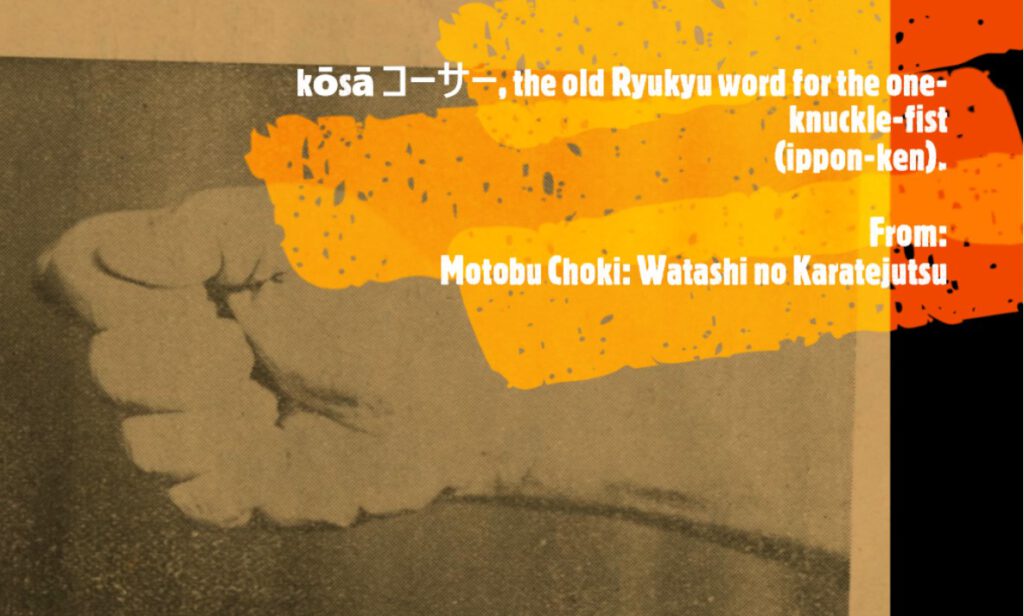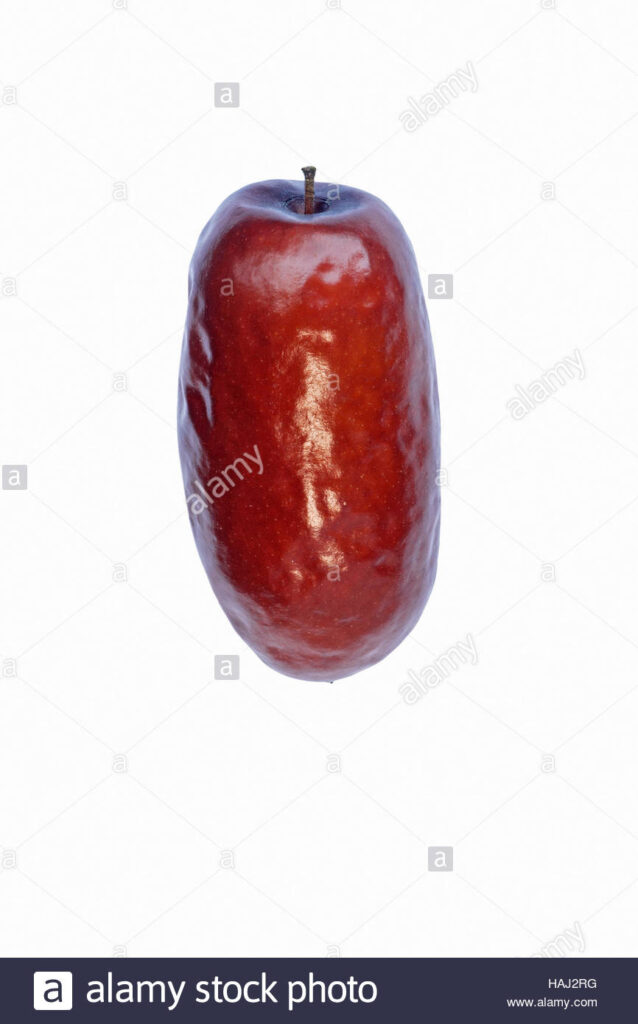One of the very few technical terms of old-style karate still currently handed down in Okinawa is kōsā. The original designation koza changed over time and was mostly forgotten or simply replaced by modern Japanese terminology, namely by the terms ippon-ken (one-knuckle-fist), shōken (small knuckle), or keikōken (rooster-beak fist). That is, kōsā is a strike with the proximal interphalangeal joint of the index finger.
The first reference to kōsā in both printed letters and photography is found in Motobu Chōki’s book “My Art and Skill of Karate” (1933) as follows:
How to clench the one-knuckle-fist (ippon-ken, kōsā)
In Ryūkyū, since ancient times, the method gripping the one-knuckle-fist has become habitual even without words of explanation. How the one-knuckle-fist is clenched in accordance to its specific rule, and as is often done since childhood, is shown in the photo (Motobu Chōki: My Art and Skill of Karate, p. 16).

According to the above, kōsā is an original old-style technique of karate widely known and practiced in Ryūkyū (Okinawa) since ancient times.
BTW, Motobu wrote kōsā in katakana syllabary, so the original meaning is unknown.
When looking into the etymology of kōsā, it might refer to a term that also appear in the Bubishi handed down in Okinawa. In the dialect of Fuzhou, this term is pronounced kau tso. It means as much as “spiking with the jujube date,” or “knocking with the jujube date.” As such it seems to be a designation that draws an imaginative analogy of the appearance of the Jujube date with the body part that mainly constitutes the technique of kōsā – i.e. the proximal interphalangeal joint of the index finger.

BTW, I explained this etymology already in the 2016 edition of “Bubishi: The Classic Manual of Combat” by Patrick McCartyhy Sensei, but only a few people seem to have noticed. The question remains why so little Okinawan terminology has been handed down if there was an actual uninterrupted personal instruction over generations.
Below, Paul Enfield Sensei shows kōsā applied to the Makiwara. The Enfields – Paul and Michelle – are among the top authorities for applied Okinawa karate and makiwara and other practices:
© 2020, Andreas Quast. All rights reserved.
